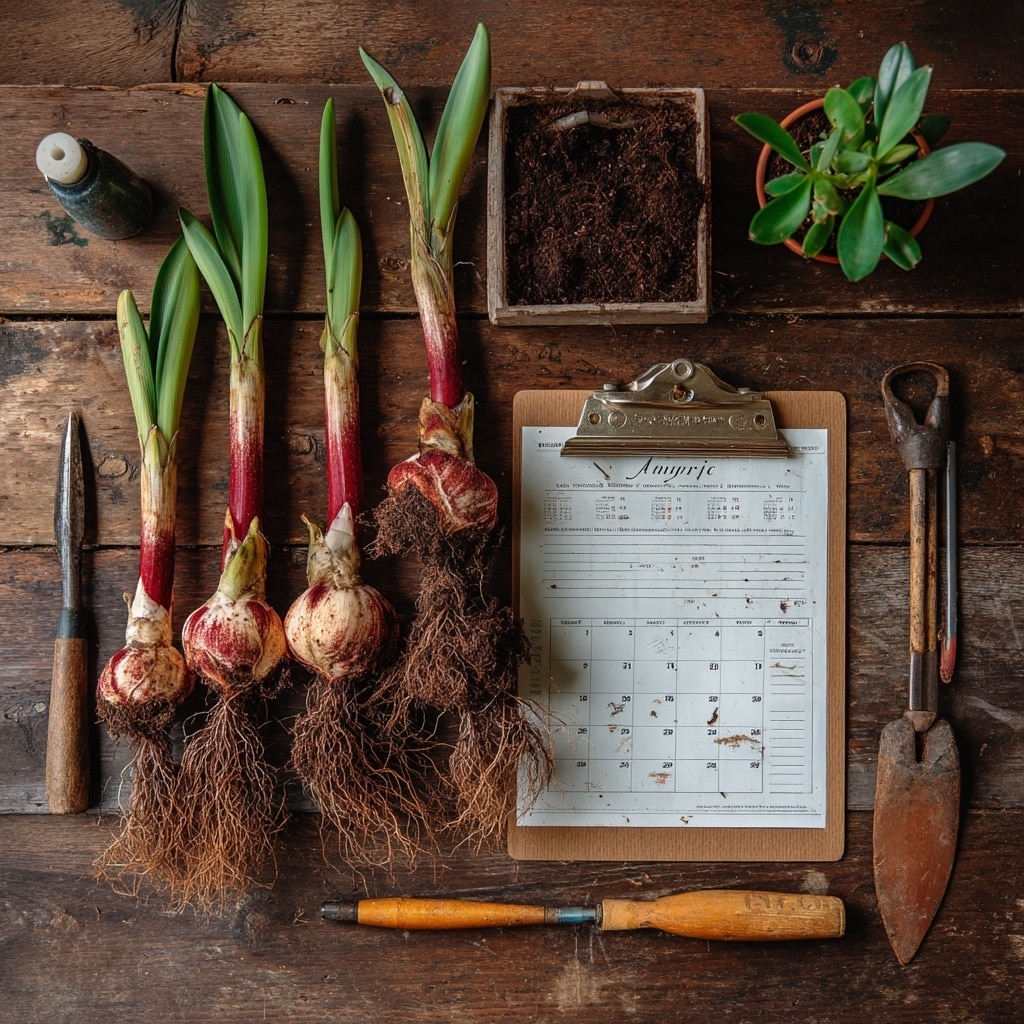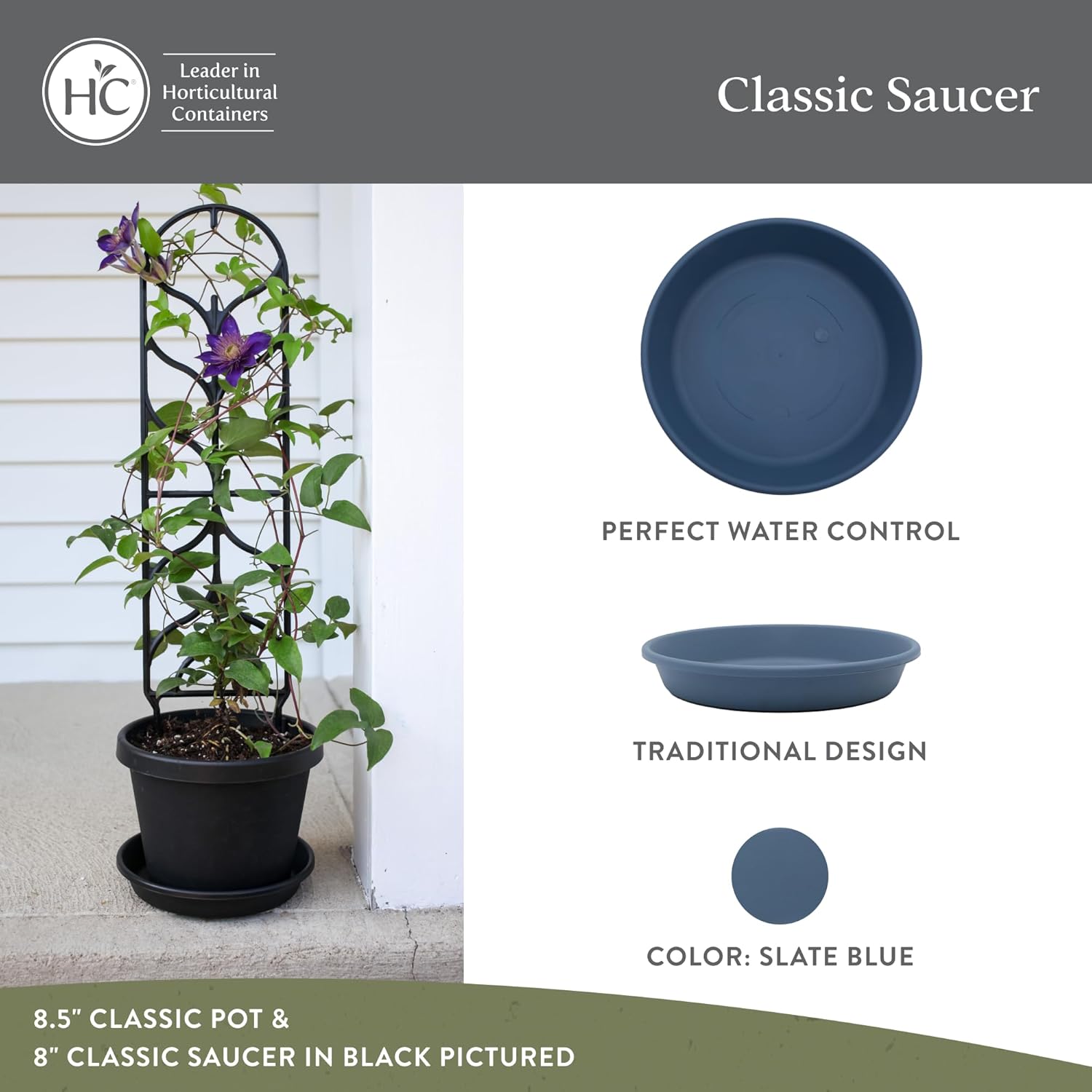Amaryllis is a stunning flowering bulb that brings vibrant color to homes and gardens alike with minimal effort. Known for its large, trumpet-shaped blooms and wide array of colors, amaryllis is one of the easiest bulbs to grow—even for beginners. Whether you’re planting them indoors during the winter or outdoors in warmer months, their ability to thrive with little care makes them a favorite among gardeners. This guide will walk you through every step of amaryllis planting and care, ensuring your bulbs grow strong and bloom beautifully year after year.
Table of Contents
Amaryllis Quick Tips for Successful Growth
If you’re wondering how to grow amaryllis indoors or outside, a few key tips can make all the difference between a decent bloom and a spectacular one. Here are the essential things to know before you get started:
- Planting Season: Start planting amaryllis bulbs from October through April. This timing gives you flexibility, especially if you’re planning blooms around holidays or special occasions.
- Blooming Period: Expect flowers to appear between late December and the end of June, depending on when you plant.
- Time to Bloom: Most bulbs take 7 to 10 weeks to flower after planting.
- Bulb Size Matters: Larger bulbs typically produce more flowers and stronger stems.
- Storage: If you’re not planting bulbs right away, store them in a cool, dry location—ideally between 40°F and 50°F. A basement or fridge drawer (away from fruits like apples) works well.
These quick-start tips will set the stage for a thriving plant, whether you’re planting in pots on a sunny windowsill or planning a colorful outdoor display.
Amaryllis – One of a Kind

Of all the flowering bulbs you can grow, amaryllis stands out as one of the most rewarding. With minimal effort, even novice gardeners can enjoy a vibrant, show-stopping display indoors or out. Its botanical name, Hippeastrum, originates from the tropical regions of South America, but this hardy bulb has found its way into homes and greenhouses around the world.
One of the reasons gardeners love growing amaryllis indoors is the ease with which it blooms. You don’t need special lighting, complex soil blends, or a greenhouse. With the right temperature and care, you’ll be rewarded with stunning, oversized flowers that brighten any room.
Amaryllis comes in a wide range of colors, including:
- Classic reds and whites
- Soft pinks and peach tones
- Bold oranges and salmons
- Striking striped or multicolored varieties, often combining shades of red or pink with white
Whether you’re aiming for a festive holiday bloom or a springtime splash of color, there’s an amaryllis variety for every style and space.
Preparation for Planting Amaryllis Bulbs
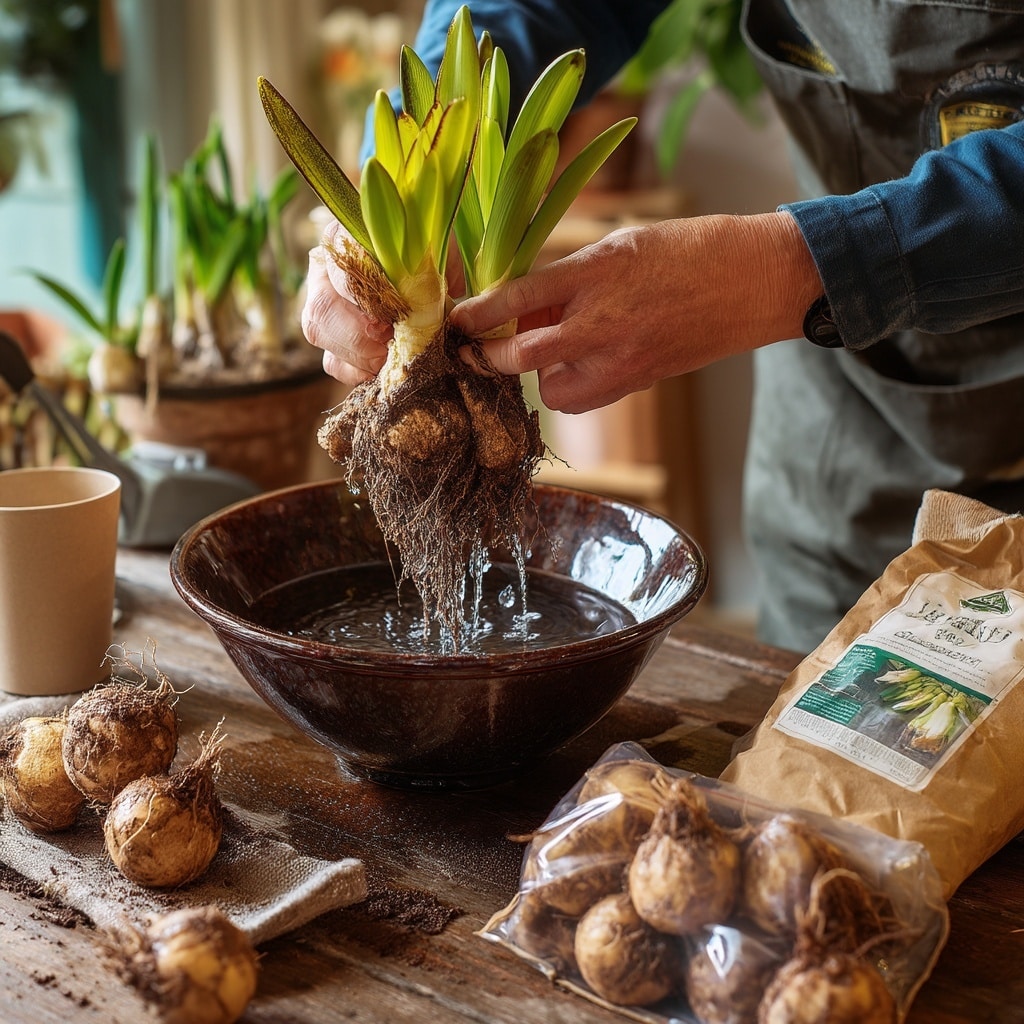
Before you begin planting, taking a few simple steps to prepare your amaryllis bulbs will help ensure strong root development and vibrant blooms.
Soak to Jumpstart Growth
Start by placing the base and roots of the amaryllis bulb in lukewarm water for a couple of hours. This softens any dried root fibers and helps rehydrate the bulb after storage. Be careful not to submerge the entire bulb—only the root plate should be in the water.
Storage Tips for Later Planting
If you’re not ready to plant right away, store your amaryllis bulbs in a cool, dry place—ideally at 40°F to 50°F. A basement, garage, or refrigerator crisper drawer (not near apples or other ethylene-releasing fruits) works well. This cool dormancy period is critical to preserving the bulb’s viability until you’re ready to plant.
Proper preparation gives your indoor amaryllis a strong start and sets the foundation for lush, timely blooms.
Planting Amaryllis Bulbs the Right Way
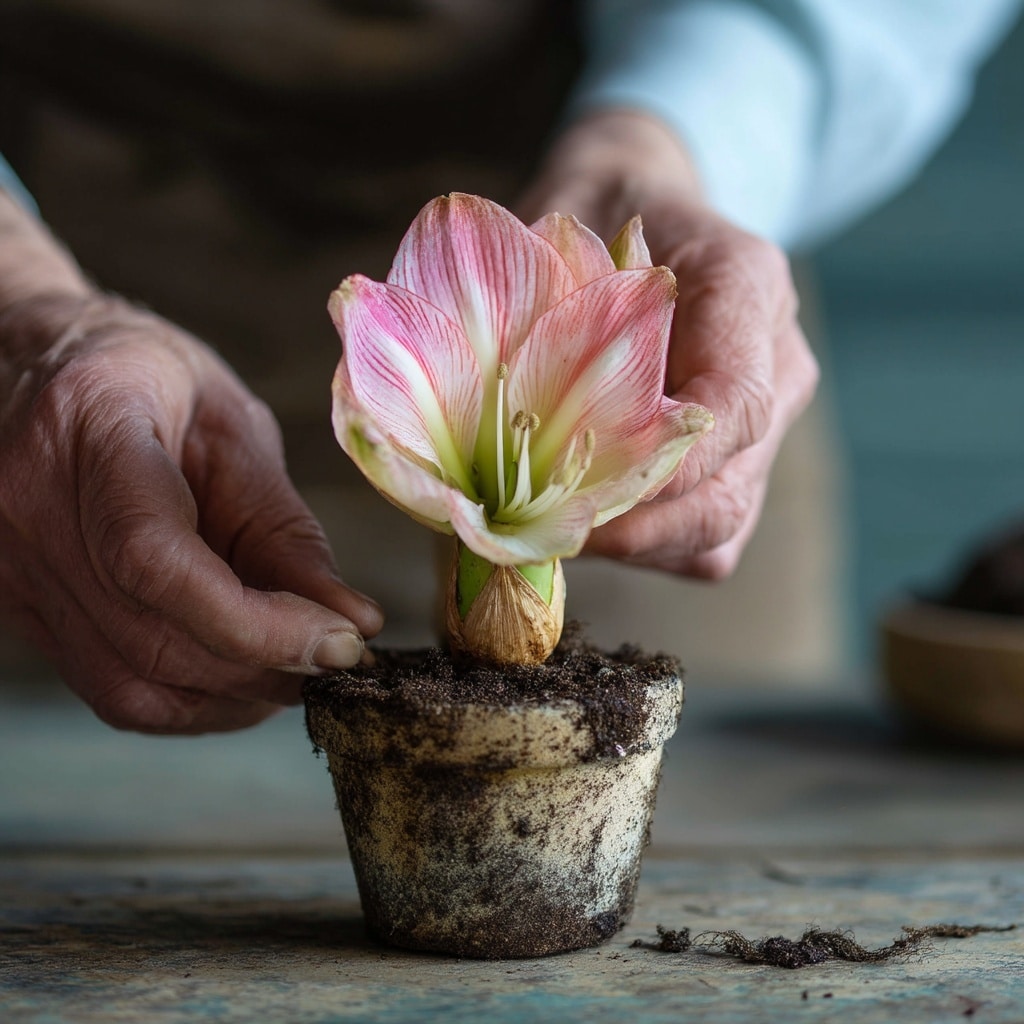
When it comes to how to grow amaryllis indoors, the way you plant your bulb plays a big role in its success. The process is simple but requires a few careful steps to avoid damage and encourage strong roots.
Choose the Right Pot
Pick a pot that is about 1 to 2 inches wider than the bulb, with proper drainage holes. Amaryllis bulbs prefer to be snug, so don’t worry if the pot seems small. A heavy pot is best, as blooming amaryllis can become top-heavy.
Use Well-Draining Soil
Fill the pot with a nutrient-rich, well-draining potting mix. You can use a pre-mixed indoor plant soil or make your own blend using equal parts peat moss, perlite, and compost.
Planting Depth and Position
Place the bulb so that about one-third remains above the soil line. Burying it too deep can lead to rot. Firmly press the soil around the bulb to secure it, being gentle with the roots.
✅ Pro Tip: Don’t pack the soil too tightly—good airflow helps prevent mold and root rot.
With your bulb planted, it’s time to move to the right environment and begin watering.
Placement and Watering Tips for Amaryllis
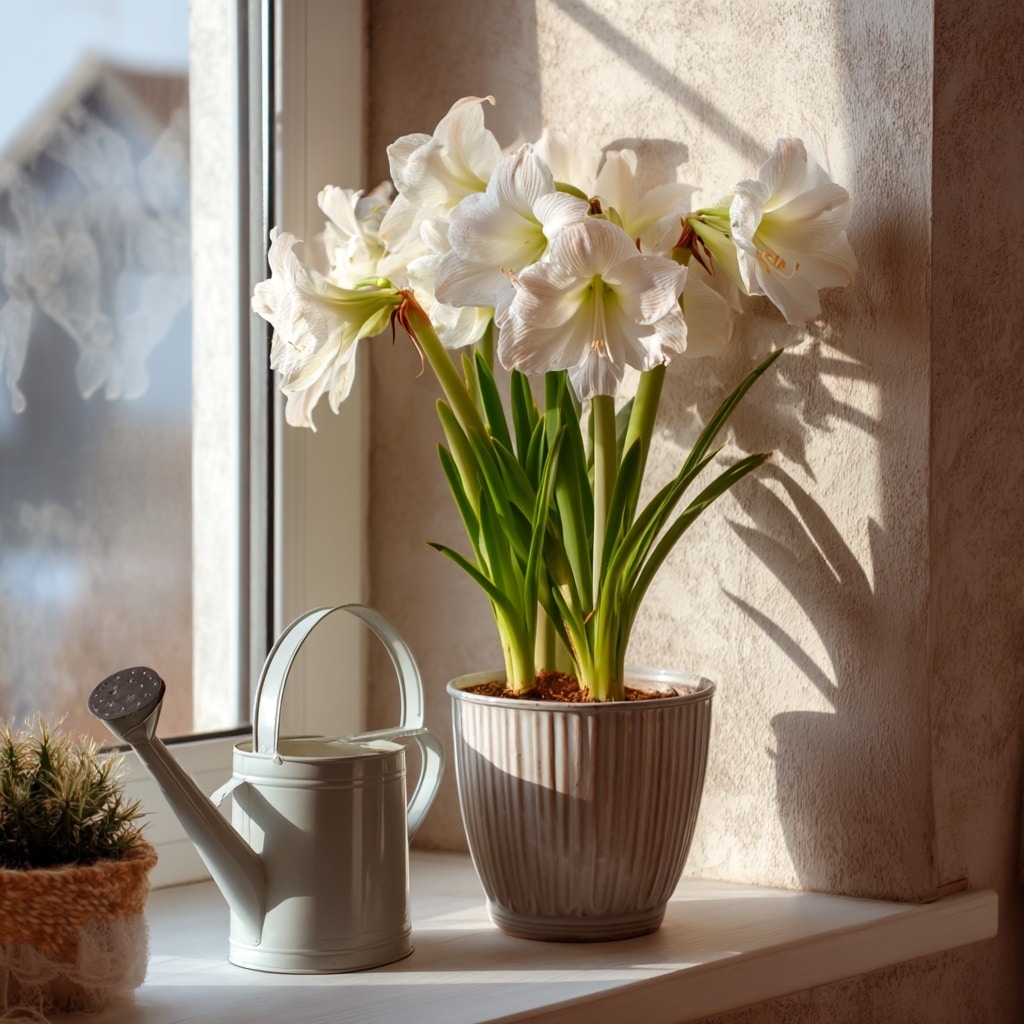
Once your amaryllis bulb is planted, where you place it and how you water it can make all the difference between a weak sprout and a dazzling bloom.
Give It Light and Warmth
Amaryllis loves warmth and sun. Place your pot in a bright, sunny window where it will get at least 6 hours of direct sunlight each day. A south- or west-facing window is ideal. The ideal room temperature for growth is around 68°F to 70°F (20°C to 21°C).
🌡️ Heat is critical in the early stages. Without warmth, the stem may not develop properly.
Watering Schedule
- At first, water very sparingly. Only add water when the top inch of soil is dry.
- Once the stem begins to emerge, increase watering slowly.
- As the leaves and flower bud appear, maintain consistent moisture—but never let the bulb sit in soggy soil. Drain any excess water from saucers or trays.
Overwatering is one of the most common mistakes when growing amaryllis indoors, so when in doubt, hold back and let the soil guide you.
Amaryllis Flowering Period: What to Expect

Once your amaryllis is properly planted and placed in the right conditions, the countdown to blooming begins. Most bulbs will reward your patience with stunning flowers in just a few weeks.
When Will It Bloom?
Under typical indoor conditions, your amaryllis will flower within 7 to 10 weeks after planting. However, blooming time can vary slightly depending on room temperature, light exposure, and bulb variety.
- Winter blooms (planted in colder months) may take longer to develop due to lower light and cooler temperatures.
- Spring blooms often arrive faster, thanks to longer daylight hours and warmer conditions.
How to Extend the Bloom Period
For those wanting continuous indoor color, stagger your plantings by two-week intervals. Plant a new bulb every couple of weeks from October through April to enjoy fresh blooms from December through early summer.
🌸 Tip: Larger amaryllis bulbs tend to produce multiple stems and more blooms, so consider size if you’re planning a display.
This natural blooming cycle makes amaryllis an ideal choice for holiday decorating or adding brightness during the darker months of the year.
After-Bloom Care for Amaryllis
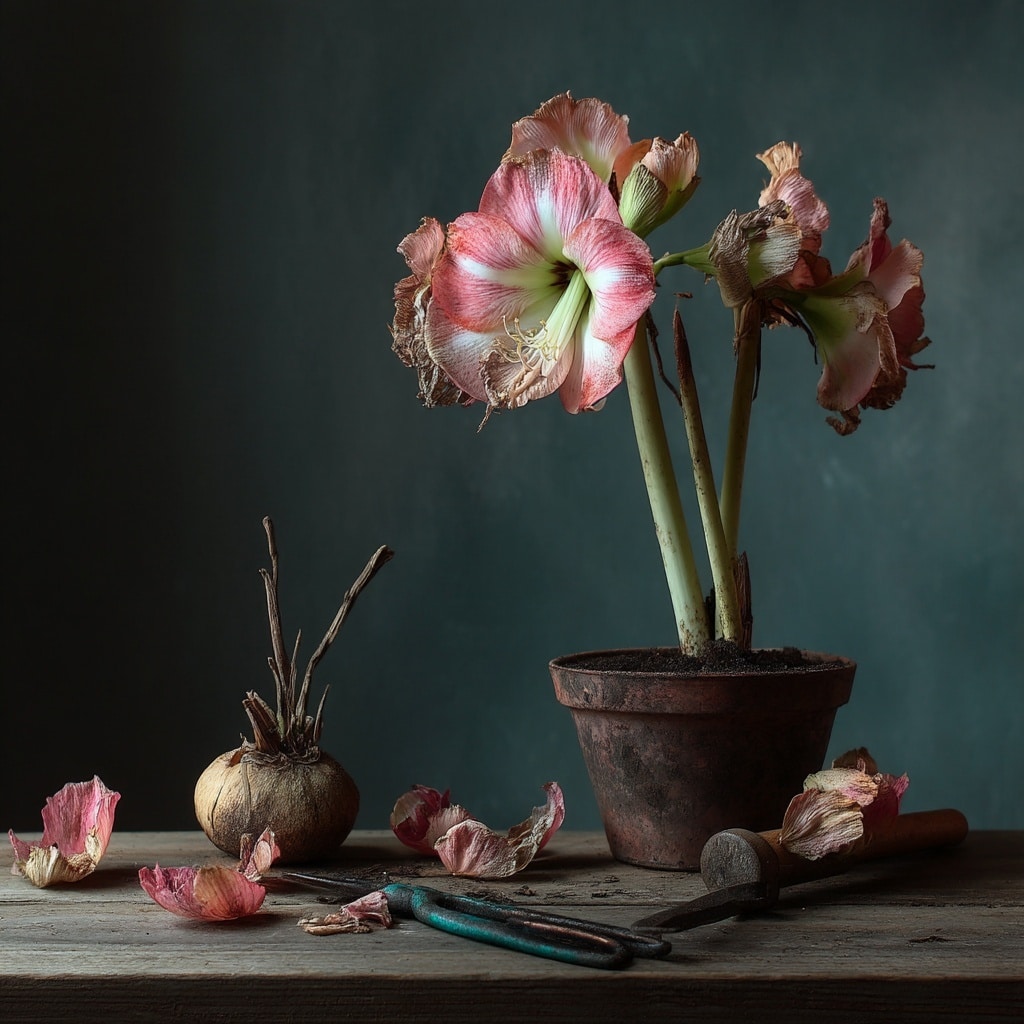
Once your amaryllis flowers fade, it’s tempting to toss the plant. But with the right aftercare, that same bulb can bloom again for seasons to come.
Step 1: Remove Spent Flowers
As soon as the blooms begin to wilt, snip off the faded flowers near the top of the stem. This keeps the plant from wasting energy on seed production and directs nutrients back to the bulb.
Step 2: Trim the Flower Stalk
When the flower stalk starts to turn yellow or soft, carefully cut it down to just above the bulb, leaving the leaves intact. Do not cut healthy green leaves—they are vital for replenishing the bulb’s energy reserves.
✂️ Pro Tip: Use clean, sharp scissors or pruning shears to avoid damaging the bulb.
Step 3: Continue Regular Care
Treat the plant like any other houseplant through spring and summer:
- Keep it in bright, indirect light
- Water when the top inch of soil is dry
- Feed every 2–3 weeks with a balanced liquid fertilizer
The goal is to help the leaves photosynthesize and rebuild the bulb, preparing it for the next bloom cycle.
Leaf Growth and Development Phase
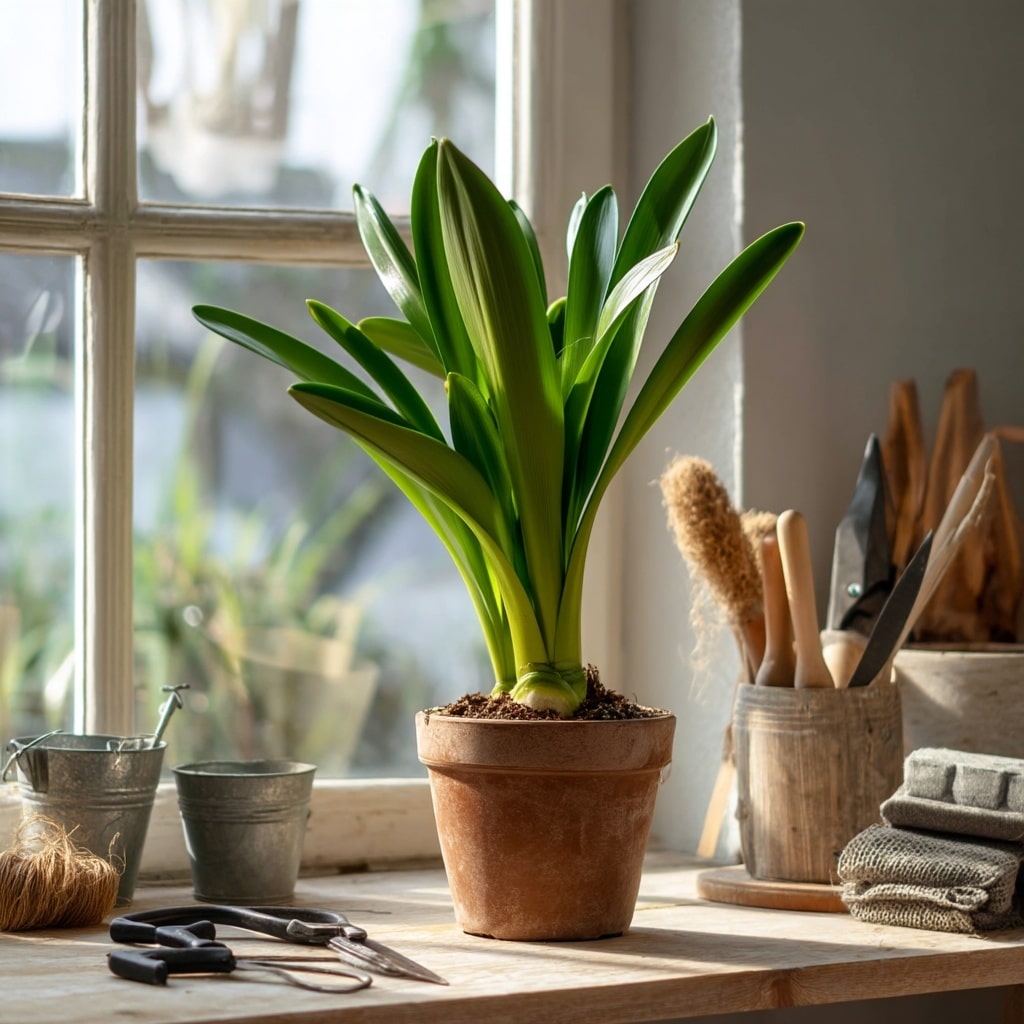
After flowering, your amaryllis enters a vital growth period where it focuses on rebuilding energy reserves. This isn’t just downtime—it’s the most important stage for ensuring future blooms.
Keep the Leaves Healthy
Once the flower stalk is gone, the plant will focus all its energy on growing long, strappy green leaves. These leaves are critical. Through photosynthesis, they store nutrients back into the bulb to fuel the next bloom.
To support this:
- Place your amaryllis in a sunny spot with bright, indirect light
- Water consistently, allowing the soil to dry slightly between waterings
- Fertilize every 2–4 weeks using a balanced houseplant fertilizer
Growth Duration
Keep up this care for at least 5 to 6 months. Most amaryllis plants will grow happily through summer if left in a bright room or even moved outdoors in warmer climates.
☀️ Optional Tip: In spring and summer, you can move your potted amaryllis outdoors, just be sure to transition it slowly to avoid sun scorch.
Time to Rest
As days grow shorter in early fall, the leaves will begin to yellow naturally. This signals the end of the growth cycle and the start of dormancy.
When this happens, you’re ready to move on to the next phase: bulb storage.
Proper Bulb Storage for Amaryllis Reblooms
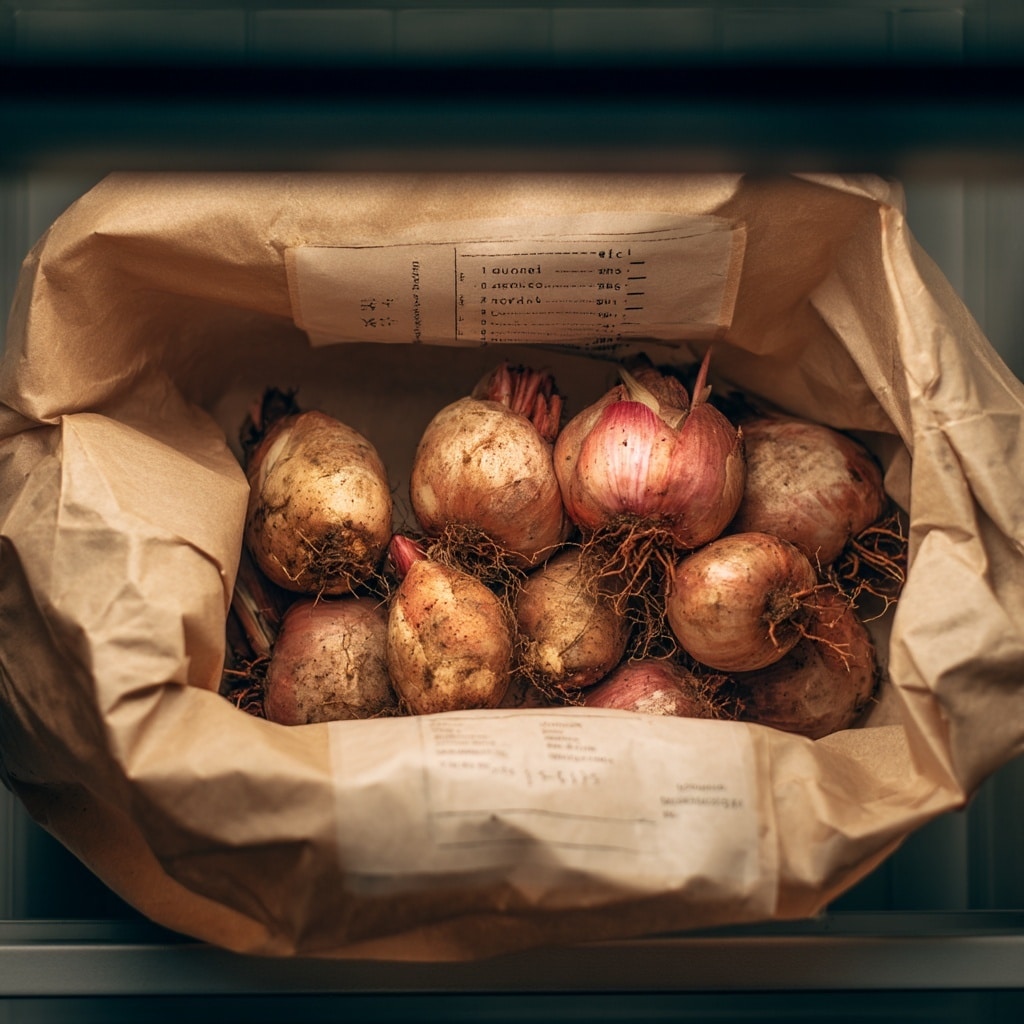
Once your amaryllis leaves have yellowed and died back naturally—usually in early fall—it’s time to begin the dormancy process. This crucial rest period allows the bulb to reset and get ready to bloom again.
Step 1: Cut Back the Leaves
When the leaves have fully yellowed, trim them back to about 2 inches above the top of the bulb. Gently remove the bulb from the soil and brush off any excess dirt—don’t wash it.
Step 2: Choose the Right Storage Conditions
Store the bulb in a cool, dark, and dry location, such as:
- A basement shelf
- A paper bag in a pantry
- A fridge drawer (but not near apples—ethylene gas can sterilize the bulb)
The temperature should stay around 40°F to 50°F (4°C to 10°C). This mimics the natural dormant cycle the plant would go through outdoors.
⚠️ Warning: Never store amaryllis bulbs in a refrigerator that contains apples, pears, or bananas. These fruits release ethylene gas, which can prevent the bulb from blooming again.
Step 3: Store for At Least 6 Weeks
Let your bulb rest for a minimum of 6 weeks, but you can leave it dormant for up to 12 if needed. Just time your replanting so that blooms arrive when you want them—usually 8 weeks after planting.
With proper storage, your amaryllis will be refreshed and ready to put on another spectacular show.
Replanting Amaryllis Bulbs for Another Bloom
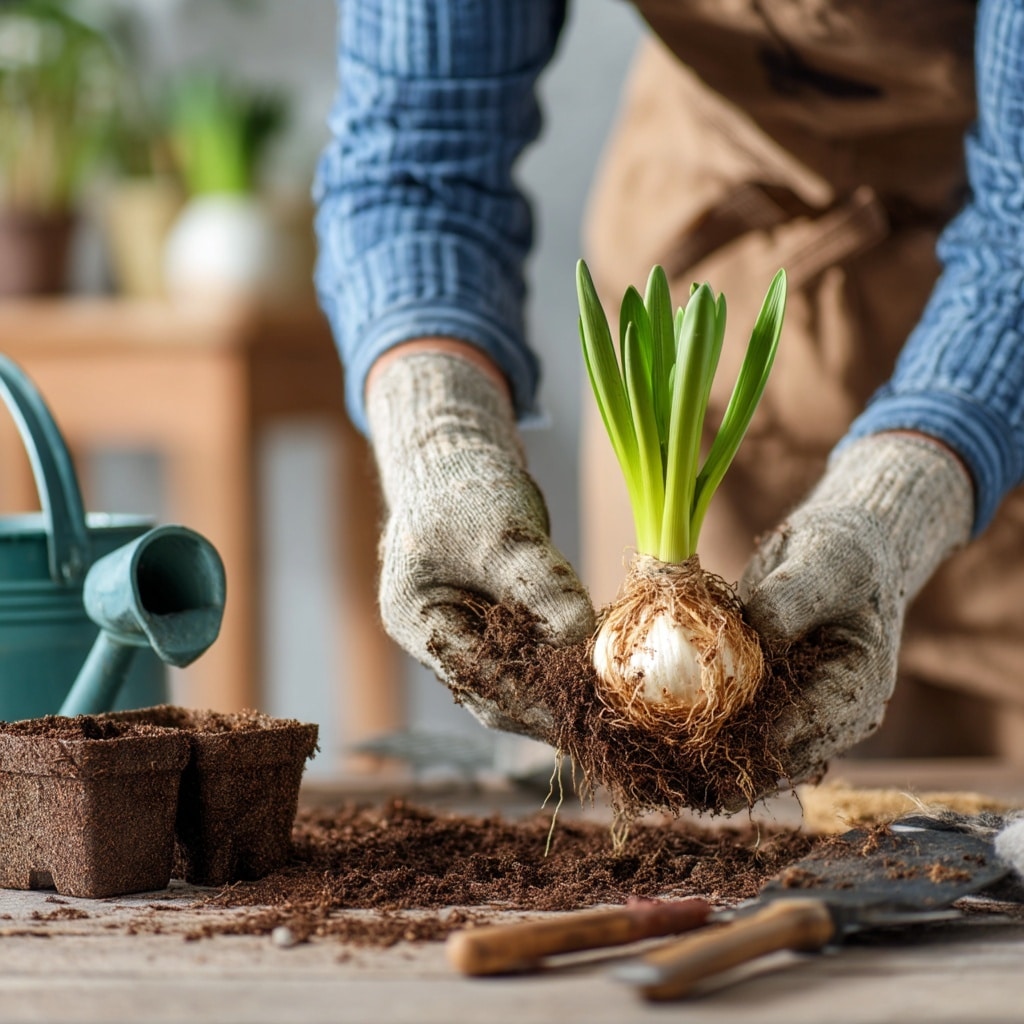
After a restful dormancy, your amaryllis bulb is ready for a fresh start. With proper timing and a few simple steps, you can enjoy another stunning round of blooms—whether you’re growing amaryllis indoors or outdoors.
When to Replant
Once the bulb has been stored for at least 6 weeks, you can replant it any time—just count 8 weeks back from when you’d like it to bloom. For example:
- Holiday blooms? Replant by mid-October.
- Valentine’s Day color? Pot it in early December.
- Springtime beauty? Try late January or early February.
How to Replant
The process is the same as the initial planting:
- Soak the base of the bulb in lukewarm water for 2 hours to rehydrate.
- Use a well-draining potting mix in a snug pot.
- Plant two-thirds of the bulb below soil, with the neck exposed.
- Water lightly, then increase moisture as the stem begins to grow.
- Place in a warm, sunny spot, and enjoy the anticipation.
With this cycle, your amaryllis can bloom again and again, offering a reliable splash of color each season.
Final Thoughts: Growing Amaryllis with Confidence
With just a bit of care and the right timing, amaryllis can reward you with spectacular blooms year after year. From the first planting to after-bloom care and storage, each step supports a long life of vibrant flowers. Whether you’re learning how to grow amaryllis indoors for winter cheer or creating a blooming schedule for seasonal color, this low-maintenance bulb proves time and again why it’s a favorite among gardeners.
Ready to plant your next amaryllis? You’ve got everything you need to grow with success.



